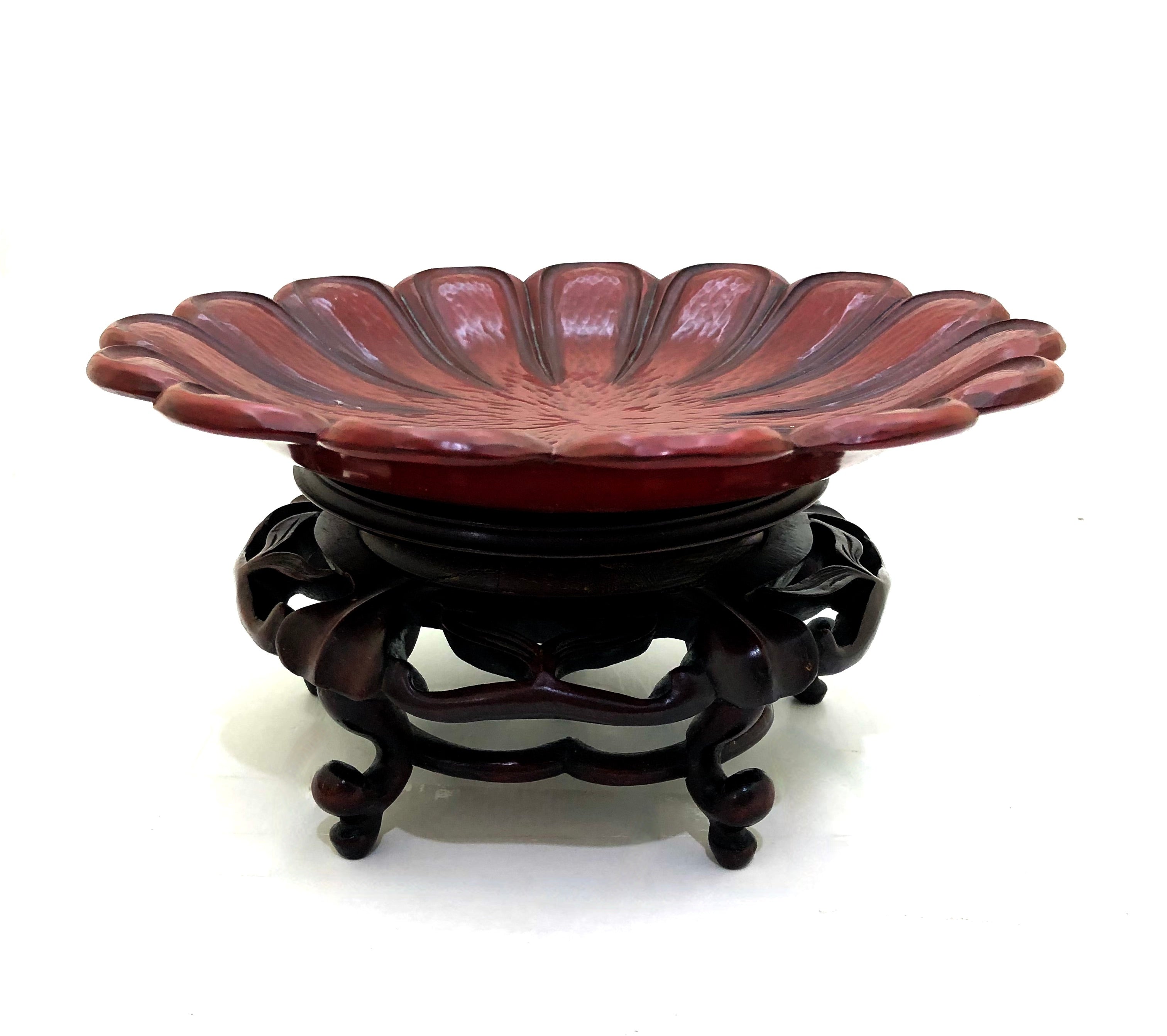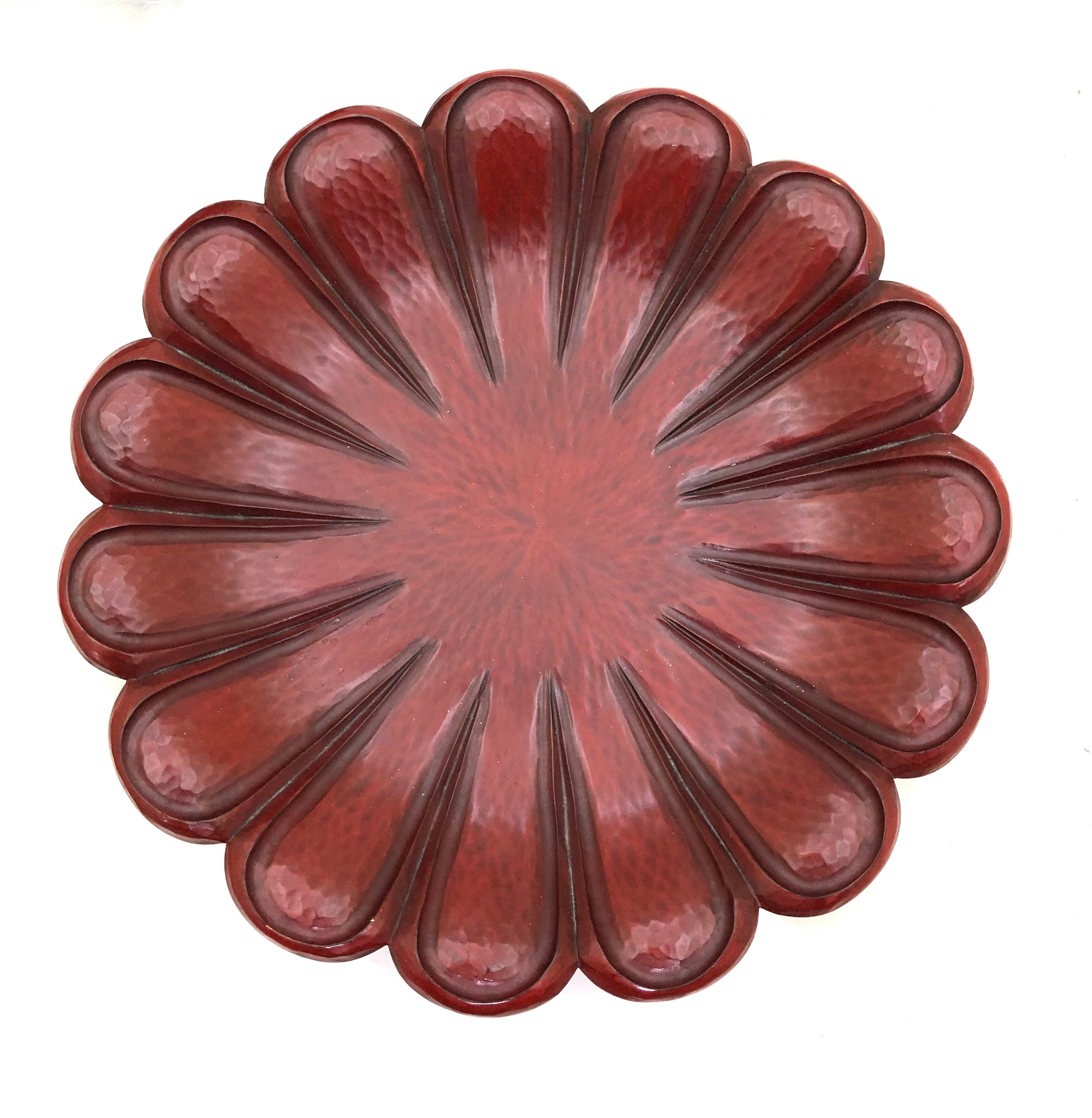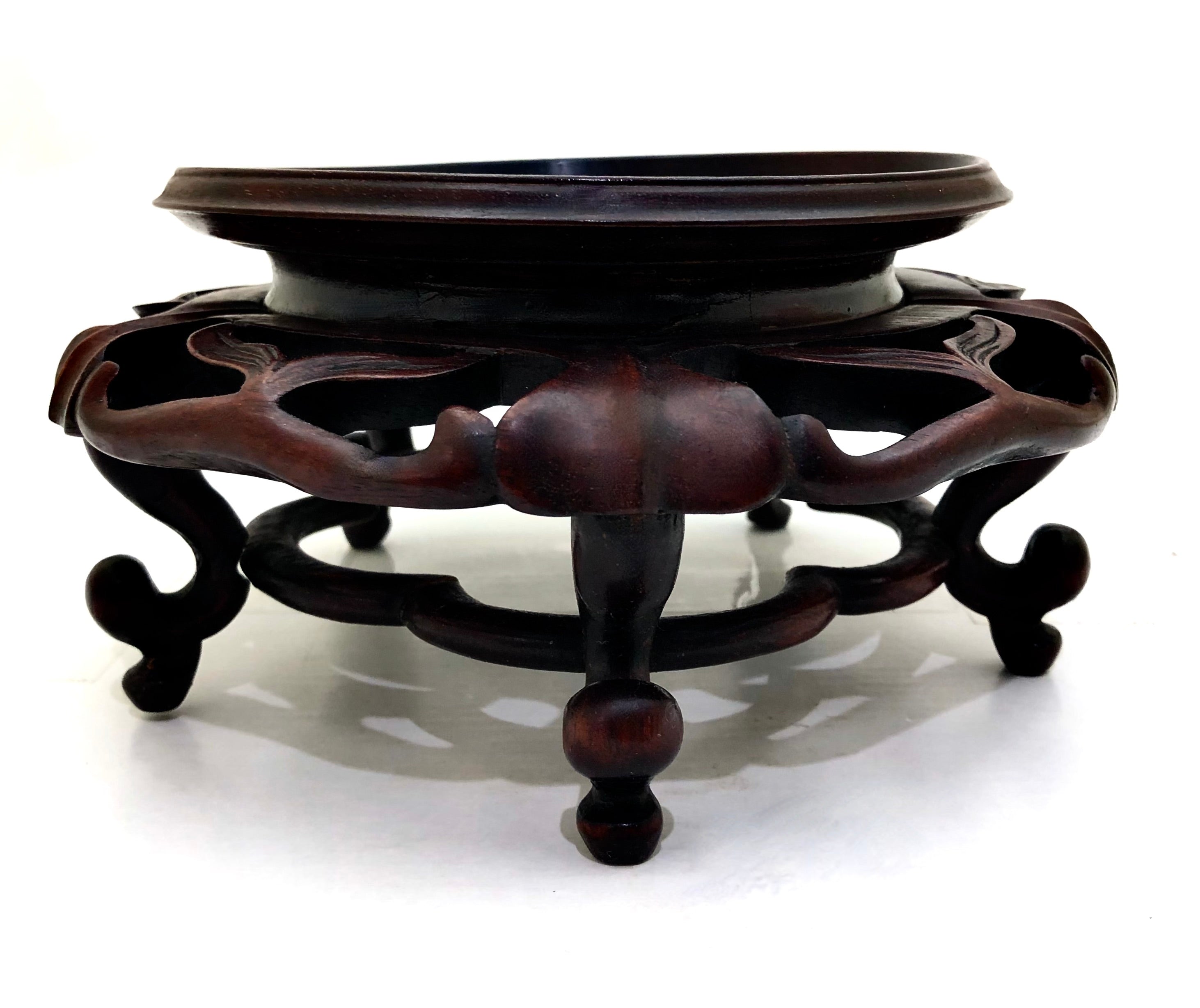




Antique Japanese Kamakura-Bori Lacquer Flower Tray with Antique Rosewood Stand
Dimensions: 10-1/4” dia. x 1-1/4” deep x 5-/14”h (with stand)
Offered is a beautiful Kamakura-Bori flower tray in burgundy/crimson color from the Meiji Period (1868-1912). This style of lacquerware was developed by these craftsmen, who began lacquering wood carvings and specifically architectural elements and containers used for rituals at Zen Buddhist temples. The rise in popularity of the tea ceremony at the end of the Muromachi era (1333-1568), expanded the range of pieces to include items such as presentation pieces for the tea ceremony. In addition, the bold patterns of the carving are strongly expressed through unique carving techniques. Later in the Meiji era, Kamakura-Bori was typically produced for the ruling class of feudal Japan and often depicted religious and floral images.
Based on the rendering of the motif of this flower tray, and the carving style, reveal that the tray was made by an accomplished Japanese artist. The featured motif on the surface is that of modified chrysanthemum flower petals, (chrysanthemum is a symbol of long life and is said to bring good luck to households and businesses, and represents a life of ease), detailed and textured to give a three-dimensional effect. Finally included in this offer is a Chinese hand-carved rosewood footed stand in great detail to honor and present this beautiful creation. This exceptional piece has an unidentified signature stamp on the bottom.
The Stand: Antique decorative stands were used from ancient times to the present to celebrate and present beautiful art objects and served to bring esteemed objects into more prominent light and bring esteemed objects into more prominent light. As with stands like the piece being offered are a favorite for display — Stand that are rough in textural carving to those that have a silky smooth texture, with the matted or richly toned surfaces have always been considered pleasing both to the touch and eye and not meant to be more important than the piece for which it is presenting.
By the late Ming period, the pairing of objects to stands of suitable style and size had become an important aesthetic objective. These beautiful stand forms were made from a wide variety of materials, including metals, ceramics, wood, bamboo, root, and stone with lacquer being preferred. Today these miniaturized stands hewn from a single block of hardwood have survived.
Condition: Excellent condition with no apparent flaws or wear from use. It has developed a beautiful muted texture over its lifetime. The stand is authentic and in the same perfect condition.
